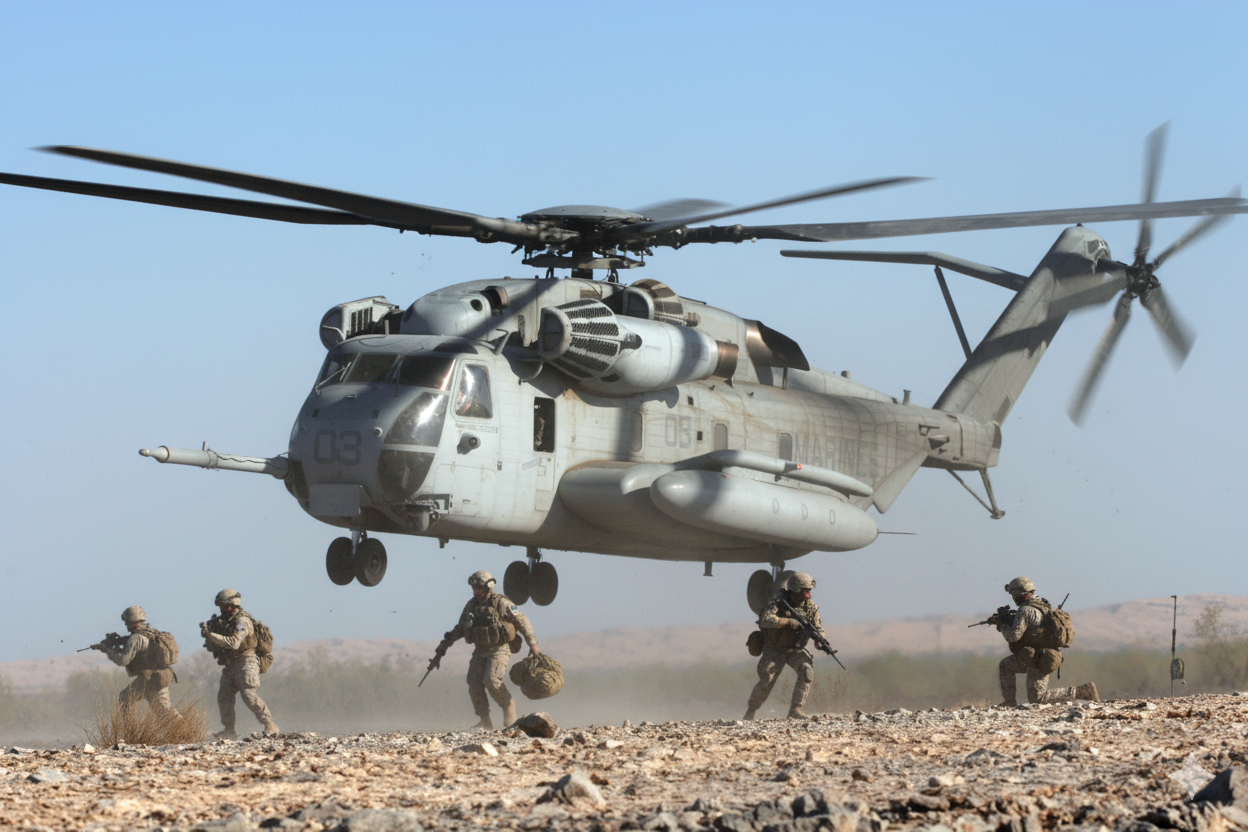Multi-Spectral Camouflage of Military Helicopters: A Complete Operational Guide
Stealth as a Condition for Survival | Military Helicopters
A helicopter multiplies force. It transports troops, delivers fire support, infiltrates special forces, and extracts the wounded.
But that same versatility makes it a priority target. Modern sensors—optical, infrared, radar, acoustic—track it relentlessly. To survive, stealth must be multi-spectral. Not a coat of paint, but a system. A complete, integrated discipline.
This operational guide condenses the essentials: surface treatments, IR/RF/acoustic signature reduction, stealth architecture, terrain tactics, countermeasures, and TTPs (tactics, techniques & procedures).
Goal: reduce detection, delay engagement, and preserve initiative.
Fundamental rule: no single axis ensures invisibility. Stealth comes from the synergy of passive camouflage, signature reduction, active countermeasures, and terrain-adapted flight tactics.
Visual Camouflage — Breaking Shape, Absorbing Light, Deceiving the Eye | Military Helicopters
Environment-Based Color Schemes
Start from the background. Lower contrast. Make the aircraft blend with the environment.
-
Forests / Jungles: dark greens, browns, and blacks in irregular patterns. Dense canopy, changing shadows—break uniformity.
-
Deserts / Arid zones: sand, beige, khaki. “Dusty” tones to dull solar glare.
-
Urban areas: medium to dark grays, angular disruptions. Match rooftops, streets, facades.
-
Snow / Boreal terrain: off-white, light gray, small bluish-gray spots to disrupt uniformity.
Application: use multi-tone patterns visible from different ranges. Brighten the underbelly to cancel shadow contrast. Dull every marking. No shine. A flash can betray you from miles away.
Contour Disruption Patterns — Fractal, Pixel, and Modern Dazzle
Stealth starts with perception. Fragment the outline. Trick distance and attitude estimation.
-
Pixelated / Angular geometry: effective in urban or rocky terrain.
-
Fractal irregulars: best for forest or mountain ops.
-
Diagonal high-contrast bands: distort shape at long range.
Implementation: avoid “logical” straight lines. Let the pattern flow across every surface—engine cowlings, weapon pylons, landing gear fairings, tail fin, and rotor mast. A continuous skin with no visible seams.
Matte and NIR-Compatible Paint
Reflections kill stealth. Gloss is forbidden. Use ultra-matte coatings tuned for Near Infrared (NIR) response so the helicopter doesn’t “glow” through night-vision goggles.
Critical surfaces:
-
Windscreens and canopy (anti-glare film)
-
Metallic fittings, fasteners, antennas
-
Leading edges and exposed panels
Checklist:
-
360° view: zero reflection.
-
Windscreen masked or treated.
-
External pylons, tanks, pods painted to match fuselage finish.
Infrared Signature — Cool, Diffuse, and Conceal | Military Helicopters
Cooled Exhausts and Deflectors
Hot exhaust gases are a magnet for IR sensors. Solutions:
-
Air/Air mixers: inject ambient air into hot exhaust, reducing plume temperature.
-
Curved or elongated nozzles: redirect and elevate the hot flow above the helicopter’s visual line.
-
Multi-jet diffusers: scatter emissions, lowering IR intensity peaks.
Result: shorter IR lock-on distance, especially against complex thermal backgrounds—cool water, warm stone, or shifting sand.
Infrared-Absorbing Coatings
Special paints and films absorb IR radiation instead of reflecting it. They dull the surface glow and lower the heat contrast on thermal imaging.
Apply them on engine cowlings, nozzle edges, and hot aerodynamic areas.
Tactical Thermal Management
Fly smart. Manage heat like a weapon.
-
Engine regimes: limit prolonged hover. Avoid transitions in open air.
-
Terrain: use cooler ground or shaded routes. Rain and fog help scatter IR.
-
Relief: keep the hot plume behind a hill or ridge whenever possible.
Thermal Flares
Last defense. They create a hotter false target to draw the missile away.
-
Automatic triggering through the Missile Warning System (MWS).
-
Simultaneous evasive maneuver—break and descend under cover.
-
Flare sequence adapted to missile speed and angle.
Timing saves lives. Waste none.
Radar Stealth — Geometry, Materials, Micro-Detail | Military Helicopters
Architecture and Surfaces
Objective: reduce the Radar Cross Section (RCS) by scattering waves, not reflecting them.
-
Inclined or curved surfaces: eliminate vertical planes.
-
Continuous skin: flush panels, smoothed joints.
-
Integrated design: antennas embedded, weapons in conformal pods or fairings.
Radar-Absorbent Materials (RAM) and Composites
-
RAM paints/ferrite coatings: absorb RF energy, convert it to controlled heat.
-
Carbon/Kevlar composites: naturally less reflective and lighter.
Trade-off: absorption heats the surface—balance IR and RF signatures from design stage.
The Rotor: A Persistent Doppler Signature
A spinning disk always talks to radar. You can only make it whisper.
-
Optimized blades: aerodynamic profile, low-reflectivity materials.
-
Faired hub (spinner): removes strong reflectors.
-
Reduced RPM during approach—safe but quieter.
-
Fenestron / NOTAR: enclosed or tail-blower systems reducing radar and noise simultaneously.
Secondary Details | Military Helicopters
Air intakes shaped in S-curves, treated mesh filters.
Metallic edges capped or covered with RAM tape.
Internal routing for cables and antennas.
Every bolt counts. Every angle polished to deceive.
Acoustic Discretion — Breaking the “Wop-Wop” | Military Helicopters
Low-Noise Rotors
That characteristic beat? Blade-Vortex Interaction (BVI). Engineers kill it by design.
-
Swept or “saber” tips: reduce interaction between vortices.
-
Variable twist profiles: smooth the aerodynamic load.
-
Elastomeric hubs: absorb vibration peaks.
Result: a few decibels less—enough to halve the detection range for human ears and acoustic arrays.
Quieter Powerplants
Multi-chamber mufflers on exhausts, sound-damped engine bays, and intake silencers reduce tonal noise. No whistle, no roar—just airflow.
Acoustic Flight Tactics
-
Approach behind terrain features—ridges, valleys.
-
Adjust speed and pitch to minimize BVI.
-
Use weather: rain, light headwind, or urban background noise to mask presence.
The best sound is the one not heard until it’s too late.
Terrain Exploitation — The First Layer of Camouflage
NOE Flight (Nap-of-the-Earth) | Military Helicopters
Flying very low breaks line of sight and exploits terrain masking.
Requirements: detailed route planning, obstacle databases, cable mapping. Radar altimeter, terrain-following systems, tactical charts. Crew discipline: speed, clearance, concise comms.
You don’t appear—you emerge.
Night Operations and Lighting Control
Darkness is an ally. Lights off. Cockpit NVG-compatible.
Use NVG and FLIR for awareness without exposure.
Avoid illuminated zones and known observation axes.
Weather as a Cloak
Fog, rain, snow—each one degrades enemy EO/IR sensors but raises pilot workload.
Sandstorms mask visually but require strict anti-FOD protocols.
Select thermal backgrounds (warm or cold) that absorb your signature. Blend in thermally, not just visually.
Countermeasures and Electronic Warfare — When Detected, Survive
Integrated Warning and Reaction
Trio of onboard sensors: RWR (radar), MAW (missile), LWR (laser).
Linked to dispensers and ECM for instant, sector-based counteraction.
Chaff
Metallic fibers released to create multiple false radar echoes.
They blind tracking radars, especially when combined with a sharp turn or descent under cover.
Electronic Jamming (ECM / DRFM)
Two strategies:
-
Noise jamming: flood the enemy radar frequency.
-
Deceptive jamming (DRFM): send false returns with altered Doppler or timing.
Power must be balanced—enough to blind, not enough to self-reveal.
Crew SOP Under Threat
MWS alert → Break + deploy immediately.
Use terrain to mask.
Communicate minimally. Coordinate with escorts or SEAD if available.
Survival first. Mission if possible.
System Integration — Platform and Mission Alignment
Multi-Spectral Coherence
Every external change affects the signature—carriage pods, tanks, fairings.
Process:
-
Post-modification audit: visual, IR, RF, acoustic.
-
Apply proper coatings: NIR paint, RAM strips, dielectric covers.
-
Requalify: low/high altitude, day/night, weather variations.
Maintenance for Stealth
Touch-ups: matte only, color-matched. Approved NIR/RAM patches only.
Inspect mufflers, diffusers, and seals regularly.
Rotor tolerances checked—noise and BVI control depend on it.
Stealth must be maintained, not assumed.
Crew Training — Stealth as Routine
Brief the threat: sensors, ranges, blind angles.
Rehearse masked routes and semi-automatic countermeasure deployment.
Debrief using onboard sensor logs (RWR/MAW). Learn, refine, repeat.
Critical Errors — Never Accept These
Bright patches or reflective tape.
Uncoated pods and pylons.
Extended hover in open areas—vertical IR plume exposed.
“Medium-low” flight instead of true terrain-following.
Predictable approach routes.
Neglected maintenance: damaged RAM, glossy touch-ups.
Every oversight amplifies your signature.
Operational FAQ
Does visual camouflage still matter against modern sensors? | Military Helicopters
Yes—but not alone. Combine visual + IR + RF + acoustic + tactics. Visual stealth reduces random detection; multi-spectral stealth saves aircraft.
Do flares neutralize MANPADS?
They significantly lower hit probability when properly timed and coupled with evasive maneuvers. Modern seekers filter better—hence the need for passive IR reduction first.
Can the rotor’s radar signature be eliminated?
No. It can be reduced—blade profile, materials, rotation speed—but Doppler return remains. Terrain masking and flight tactics fill the gap.
Do NIR paints change maintenance routines?
Absolutely. Precise tone, matte level, and emissivity control are mandatory. Use certified patches and procedures only.
Does rain improve stealth?
Often yes—EO/IR sensors degrade, acoustic masking increases. But pilot workload and risk grow too. Exploit with caution and SOP discipline.
Conclusion — Stealth: the Discipline of Details
No miracle coating. No single trick.
Stealth is discipline through convergence: design, materials, matte NIR/RAM finishes, cooled exhausts, dispersed waves, softened sound, smart tactics.
Together, they delay detection, shrink engagement range, and expand tactical margin—to strike first or exit intact.
Future advances—adaptive rotors, next-gen RAM, AI-managed signatures—will strengthen the principle. But fundamentals endure: break the outline, cool the source, scatter the wave, jam the sensor, exploit the terrain.
Best regards,
The Nutsof Team
Advanced Camouflage & Defense Solutions
🌐 www.nutsof.com
Follow us on Facebook and Instagram for the latest in advanced military camouflage technologies.


